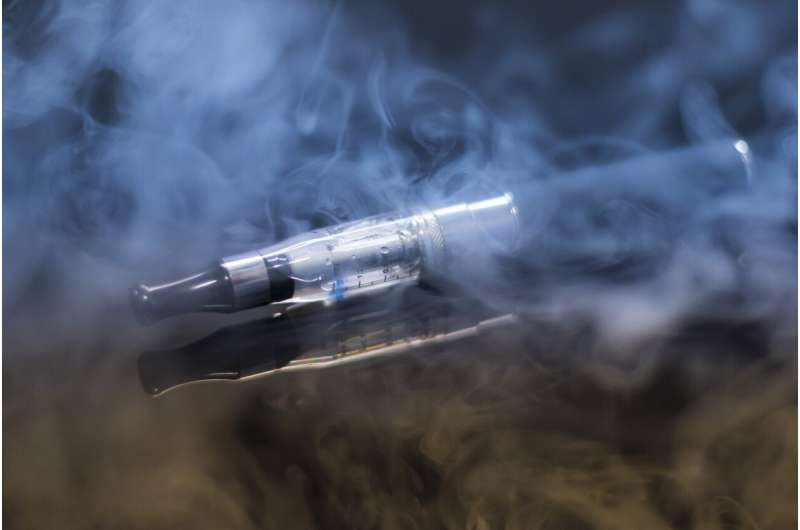Researchers find correlation between vaping cannabis and other tobacco use

Researchers at UNC School of Medicine found almost one in ten North Carolina adolescents reported ever vaping cannabis or marijuana. The researchers also found strong associations between the use of certain types of tobacco products and the use of e-cigarette devices to vape cannabis. The paper, published in BMJ Open, analyzed results from the 2017 North Carolina Youth Tobacco Survey, which surveyed more than 2,800 high school students.
Limited prior research showed that some adolescents used e-cigarette devices to vape cannabis.
"Our research expands and builds upon this data by showing how many high school youth in North Carolina are vaping marijuana and what other tobacco products students are regularly using in addition to vaping cannabis," says Sarah Kowitt, Ph.D., MPH, UNC Family Medicine postdoctoral researcher and first author on the paper.
The study found that:
- the greatest correlation was among water pipe, cigar, and e-cigarette users, with 43 percent of water pipe users, 35 percent of cigar users, and 29 percent of e-cigarette users having vaped cannabis
- Vaping cannabis was more common among male students, and prevalence increased with grade level
"These findings provide evidence that large numbers of high school students who use tobacco products have vaped cannabis," says Adam Goldstein, MD, MPH, Director of UNC Tobacco Intervention Programs and senior author on the paper. "Using current North Carolina enrollment figures, the findings suggest that over 46,000 high school students across the state have vaped cannabis."
Qualities of non-combustible forms of cannabis (such as the potential flavors, no smell of smoke, lower harm perceptions) may attract youth who would otherwise not use cannabis, similar to how e-cigarettes—especially Juul products—have attracted youth to inhaling nicotine products, youth who would otherwise never have started smoking or exposing themselves to nicotine.
As with e-cigarettes, much more research is needed about the harms and benefits of non-combustible forms of cannabis and the effects of vaporized cannabis use, especially among adolescents.

"Tobacco control policies targeting adolescents—such as communication campaigns, age 21 buy laws, and smoke-free laws—must focus not only on e-cigarettes, but also the use of e-cigarettes to vape substances other than nicotine," says Kowitt.
Kowitt and Goldstein plan to reassess prevalence of vaping cannabis in the 2019 North Carolina Youth Tobacco Survey. In the meantime, increased educational efforts are needed to educate students about the impact of vaping cannabis and use of multiple tobacco products.
More information: Sarah D Kowitt et al. Vaping cannabis among adolescents: prevalence and associations with tobacco use from a cross-sectional study in the USA, BMJ Open (2019). DOI: 10.1136/bmjopen-2018-028535





















